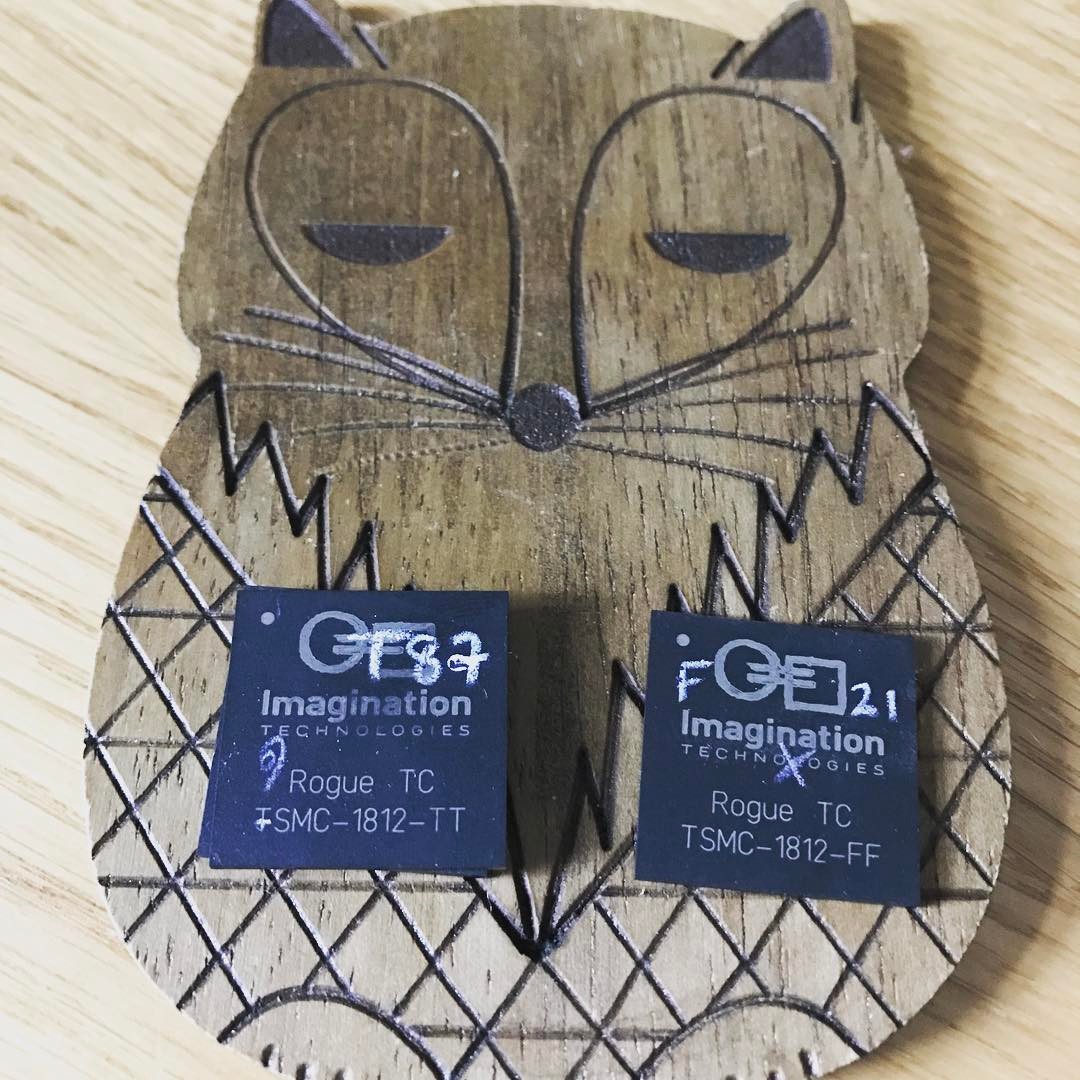PowerVR Rogue test chips
Sunday, Jan 8, 2017 · 400 words · approx 2 mins to read
While sat at work the other day, someone on my team came to tell me that they’d found a box of old unmounted test chips in one of the recreational areas, with “Please take one” written on the top of the box. As a collector of GPU stuff, especially rare and old, I didn’t need any more invitation!
There were a bunch of different chips in the box, but the two pictured above are interesting because they’re from the same production run, but have subtle variation in manufacture to allow them to perform differently at the same voltage and temperature.
Look closely at the markings and you can see TSMC-1812-TT on one, and TSMC-1812-FF on the other. TSMC are the foundry, 1812 means week 18 of 2012, and TT and FF are the process corners chosen for the N- and P- type transistors used.
During semiconductor manufacturing, rather than every transistor performing identically, there are physical differences that can be imparted to the transistors, to allow them to switch reliably at different points on the voltage/frequency curve, depending on voltage, operating temperature and a bunch of other properties of the device.
TT means typical-typical, so the transistors used are “normal” and the foundry effectively guarantees their operation under nominal conditions at a given upper frequency. FF means fast-fast, which means the transistors should be able to switch faster than those at the typical-typical corner, but not across the same range of voltages and operating temperatures.
It’s those kinds of choices that allow semiconductor vendors to produce chips from the same RTL and netlist, but with synthesis changes to account for the different process corners that allow the chip to run faster or slower for a given voltage, along with all that implies about power consumption and other operating factors.
Pretty cool, and not something you often see!